The lounge or host is a decorative and beautiful plant. A distinctive feature: large and fleshy leaves with different shape and sizes, depending on the variety. The plant is well adapted to the new cultivation conditions, so the fun can be grown on depleted and deprived of moisture soils. It is well tolerating a short-term decrease in temperature and fits perfectly into a common landscape.
If you look at the pounding, which grows in natural conditions, then we can say that this is a giant plant. Leaves are very large and thick, spread. The host looks somewhat mysterious. Only in one place can be seen several types of plants, because they quickly cross in and as a result new variations are formed.
Host Flower - Description
The plant is not large, so the host can be grown at home. There are many varieties of this plant, adapted varieties - which can be grown on the outdoor ground and plants that are designed for growing in pots.
There are more than 60 types of grassy perennial plants. They refer to the Sparazhev family, but earlier this type of plants attributed to another family: "Lily".
The name of the host is unusual, thanks to the name of Botany from Austria, who paid a lot of attention to the reproduction and development of this plant. Previously, the flower was called a lounge. The country of East Asia is considered the country of this plant, as well as the southwestern part of the Far East, the Kuril Islands and Sakhalin. Despite the excellent accessibility, even in a lack of liquid, the host can be found more on the soils rich in moisture. The plant feels perfectly near the shores of the reservoirs and on the slopes of the mountains. Also the host grows on the edges.
In Japan, this plant is honored and even considered sacred, some parts of the plant Japanese are used in cooking to prepare delicacies.
The plant is low, the rosette type, grows in the form of small, but rather dense bushes with roasting large and fleshy leaves. Roots thickened with branches - roots-threads.
Since in nature there are more than 60 varieties of this plant and more than 4 thousand varieties (!), The leaves may differ not only with dimensions, but also forms. You can find miniature samples, with small leaves, the size is no more than 5 cm, with different shape and color. The color of the leaves can be both light green and dark with the transition to a grayish blue shade.
Some species leaves may not be monophonic color, but with patterns: with white stripes, light stripes or strokes. Patterns can be diverse in shape and length. Interestingly, depending on the grade of plants and conditions of cultivation, the shape of the leaves can change: the edge can be smooth, sharply outlined or vice versa, wavy.
Hosts flowers are beautiful, somehow resemble lilies, various colors. Despite the attractiveness of flowers, all the same hosts more attract the eyes with their dense roasting sockets. In diameter, they can reach a meter!
The plant is unpretentious and hardy, it is distinguished by stability - from the moment the leaves turn out (this happens in the end of spring) and until the end of October, the plant pleases with its unusual beauty.
Vorts and types of hosts
In landscape design, plants are very popular, there are more than 4 thousand hybrid varieties, but only some deserve special attention, as they served as the basis for creating new varieties of the plant.
Types of hosts:
- Curly, growth up to 60 cm. Maximum, leaves are very broad and dark coloring with white, clear and beautiful border.
- High - in growth reaches almost a meter, the same large and dark leaves.
- Thunderstun - in height, an adult plant grows up to only 50 cm, a kaym of a gentle-cream shade, juicy leaves, bright green.
- Zibold - the growth of the plant is slightly greater than half a meter, the leaves are large with the veins.
- Wavy - growth to 75 cm, beautiful wavy leafs with white mid and patterns.
- The plantain host is large bright and glossy leaves, the plant is low, only 50 cm.
All varieties are classified by type:
- Coloring plants.
- The size of the leaves.
If we consider separately the first group, then it includes 5 species of plants, which differ in color of the leaves: blue, yellow, green, volatile (with a border of the edge of the leaf of a light shade) and the opposite, the leaves are light, and the border is dark green.
Plant dimensions by groups:
- 1 Group: Dwarf. This househouse of the host, grows as much as possible to 10 cm. The leaves are gray-blue, the shape of the leaves is similar to the ears of the mouse;
- 2 Group: Miniature, 5 cm more dwarfs with leaflets of green, yellowish or blue shades;
- Group: Small, in growth reach from 16 cm and up to 25 cm maximum. Color leaves rich green with white or yellowish stripe. There are also varieties with blue leaves;
- 4 Group: Medium hosts, growth up to 50 cm maximum. Dark color leaves with light middle. There are varieties with white leaves, but over time they are darker;
- Group: Large plants, up to 70 cm with leaves of different shapes and coloring: smooth, stamps, with light border and strokes;
- 6 Group - huge, giant plants, the height of more than 70 cm with different colors with leaves and shape. Distinctive feature: thick and large leaves. A wide gold strip can be held along the edge, hosts are found with bluish leaves around the edge and a green middle.
How to grow a host at home
Host home - the plant is unpretentious, well adapts to any conditions and this flower can be called a plant for lazy.
Methods of breeding:
- seeds;
- stalling;
- dividing bush.
Consider all methods of breeding hosts at home
If you seriously decide to row this plant and grow a host from seeds at home, you need to pay special attention to the preparation of seeds.
Preparation of seeds and cultivation of the host at home:
- Before sowing seeds in the pots, they need to soak up for 30 minutes in the juice juice or any other growth stimulator. For example, the corneeling or epin is suitable. The fact is that the seeds are very weak and they have a bad germination. Therefore, experts advise to do so or to temper the seeds by cold: for 4 weeks to withstand in the cold.
- The sterile substrate is also an important moment, there should be no microorganisms and fungus in the soil, since the seedlings are although they will rise, but will be weak and painful. For this reason, experts are recommended to purchase a ready-made substrate in the store. It is necessary to add vermiculitis, peat or perlite. Or immediately buy a substrate with these components.
- Processing Pot - mandatory procedure. The pot needs to wipe the heatman or alcohol solution. After that, you can proceed to filling the pot prepared pre-substrate (moisturizing). On the bottom you need to pour a bit drainage and put the moistened soil. From above, scatter seeds and close the small layer of earth, a thickness of about 1 cm or a little less. Easy seal is allowed, so that the moisture from the soil is not evaporated too quickly. But for the preservation of moisture, you still need to cover the pot with a package or glass flask, you can plastic cutting bottle.
- The temperature of the soil at this stage should be no lower than +18 degrees, and even better - up to +25 degrees. Then shoots will appear faster. It is necessary to wait for the emergence of the first germs within 2-3 weeks.
- Seedlings are still weak, so they need to be protected from direct sunlight. It is necessary to delete condensate timely and ensure timely watering.
- Seeds feel great in a shaded place until the first germs, then they need more light.
- Host picking - as soon as the first pair of leaves appears. Then you can put seedlings into individual pots.
- In the pot, pour drainage, layer of the shop soil and from above - small sacred sand.
- To moisturize the first time the seedlings are needed by the lower irrigation: pour water into the pallet, put the pot into it and wait until it gets into the soil layer well.
- Hardening seedlings: film can be removed for 1-2 hours during the day, leave the plants outdoors if the temperature on the street is optimal (not lower than +18 degrees and no impetuous wind).
- Home Host Flower is slow, so you need to gain patience, and still take into account the factors that from the host seed can lose varietal signs. Therefore, you should not count on the shape of leaves, color and patterns.
One of the most common and simple methods of reproduction of this plant is the method of drawing and dividing the bush. If it is an adult plant, age from 4 years, it perfectly transfers division and development and growth this procedure will not affect. If you perform manipulation at an early age, it is possible to brake growth rates. But it all depends on the variety of plants and climate. Some hosts will perfectly postpone the division procedure, and some will need a long recovery period for 1-2 years.
Features of the breeding of the host by shifting:
- Dates: the end of summer or spring. But you can propagate the host with the onset of spring and up to the middle of the autumn, that is, the whole warm period. As soon as the shoots appear, the early spring host need to carefully dig up for a pitch, so as not to damage the rhizomes and sharp knife or shovel carefully divided into several parts.
- How to split the rhizomes forks: you need to insert a pitchfork, to reduce and push out - this method will not make it possible to injure the plant, as when dividing a sharp knife.
- Some gardeners are in no hurry to dig a bush entirely, and carefully separate a small triangle from an adult plant. The formed pit is filled with fertile soil.
- If accidentally, when you divided the bush, broke off the root, but the shoots remained a piece of rhizomes, do not worry. It is necessary to put the stalks in the greenhouse, put in the shade and cover the plastic bottle (transparent). A few weeks later, the young plant should be rooted.
- In order for the host faster, the cuttings need to cut off the foliage by half.
Planting the host to the vase at home
In order to plant a seedling or stalk separated from an adult plant, it is necessary to prepare the soil and pot. Capacity should be roomy and approached by plant sizes. Therefore, at the initial stage, you need to know what kind of variety you are dealing with. Not all varieties of host can be grown at home in pots and vases. There are special varieties adapted for growing in room conditions.
Preparation for landing:
- The vase or pot take a medium size, given the fact that as the plant should have to transplant into larger vase. The pot must be a hole for drain.
- We prepare a fertile mixture, drainage. Soil requirements: optimal humidity, weakly acidic or neutral to be a good drainage. Plants do not like heavy soils and sand.
- At the bottom of the pot, you need to pour drainage, then fill in half the soil and insert the rhizome with a cutlets or put in the center of the seedling. Carefully fill in all the free space around the ground, slightly tamping her with my fingers. The soil is used for planting pre-moistened (2 hours before landing, we water well).
- If it is a landing with the division of the bush, then you need to remove all damaged and dry roots.
- We choose a place: the host needs to be put in such a place so that the pots do not heat the straight sunshine. Rhizomes do not withstand heating and can even get burns. The plant will feel great in half and in the place where there are no drafts.
- When choosing a place of cultivation, focus on the fact that if the leaves are bright and with a strip / ornament, the plant will need more light. If the color is made, then - half-day, but in the morning and in the evening the sun illuminated the host. If it is a view with the leaves of the blue shade, then landing the host only in the shaded place. Such types of the sun is only needed a couple of hours a day.
- Watering is moderate as soon as notice that the soil began to push.
- In the warm season, the pots can be taken to the balcony or loggia, and with the onset of cold weather, put into the room. Hosts will feel good in a dry and cool room.
- In winter, watering comes down to a minimum, but also the soil drying is unacceptable. Therefore, check the soil once every 4 weeks. Watering light.
- With the onset of spring hosts faster wake up at home than those that remained wintering in the open soil. If you see that the plant does not wake up and does not go to height, leave the host in the room until it warmer. In the afternoon, you can pull out pots with plants on fresh air, and for the night to take back, since the nights in the spring are still cold.
Host - Home Care
Actually care for the flower at home is not difficult, but here the opinions of specialists and flower water diverges, as some believe that the host will start with time, as it is more adapted for growing in the open ground, and other specialists believe that with all favorable Conditions, plant can be delighted for 10-15 years.
Host Flower - How to Care:
- for growing on the windowsill, small varieties of plants are suitable. And even though the host does not apply to evergreen plants, after all, try;
- experts recommend to remove the flower into the basement, where the temperature will not be lower than +2 degrees. This is necessary so that the plant takes place the same phases of development, and in the open soil;
- do I need to transplant the host in a big pot? If this is a dwarf plant, then it is enough to immediately plant seedlings into a spacious pot. And if the plant is medium in size, it will take a larger pot as we grow. The host moves well with the transplant, but there have been cases when the plant did not take root in a new place. Because of this, the mass was lost, the bloom was not so long;
- adult plants feel well on shaded windowsill, but they periodically need sunlight. But it should be not direct sunlight;
- if some rare variety of a dwarf host was acquired, then undesirable to divide the bush into several elements to plant plants and thus propagate. The host does not accept this and may not take care or will be rooted for a long time. If you have purchased a host in a container, then it needs to be grown in it until the strong root system is reached. And then decide what to do next: leave both or transplanted into open ground;
- when growing in pots, each flower, I want a bush to look neat and caught up to the sides. Therefore, the blooms need to be broken. Otherwise, when flowering is over, the plant can fall apart. And more: a few years later, the host will still grow strongly, so it needs to be divided: separating young cuttings from the root and put them in a new place.
Host home: Diseases and pests
Since the plant is grown at home, the pests of the host are not terrible. But this plant is subject to illness, not only when growing in the open ground, but also in pots. The host is very susceptible to the virus X - on the leaves there are small yellow dots or stains. If the plant is ill, it will have to be thrown, because the neighboring hostes in pots can be infected. It is also necessary to get rid of gloves and the entire tool that was used in the work. Disinfect the tool, but the pots are better replaced with new ones.
Another host disease - follystyractose when large brown browns appear on the leaves. Over time, they will begin to merge with each other, the surface is formed on the surface. The disputes are affected by all the plant, including the blooms. Soil also infects, so you need to completely get rid of such a plant and throw a pot.
Spraying by fungicides will help protect the plant from infection.

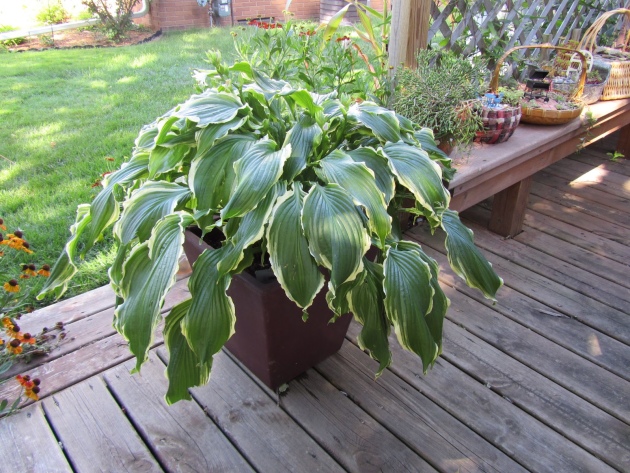
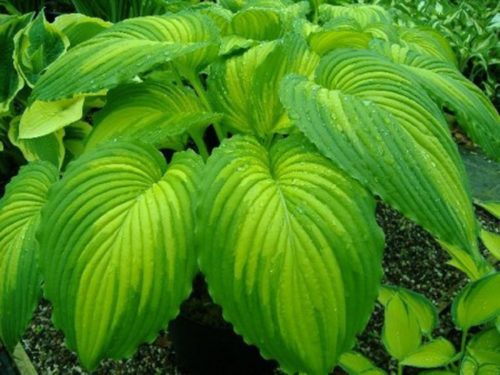
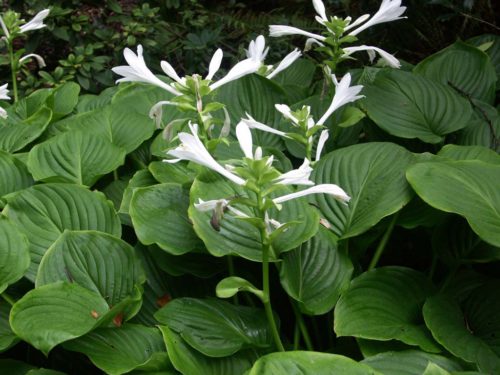
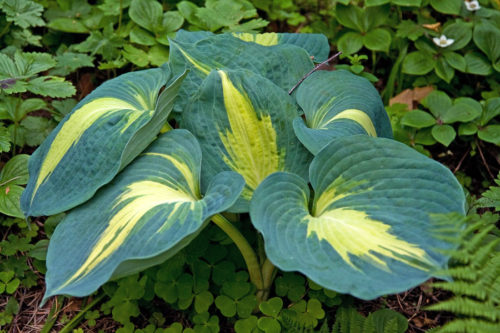
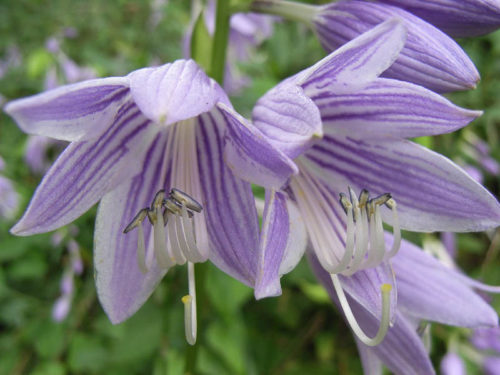
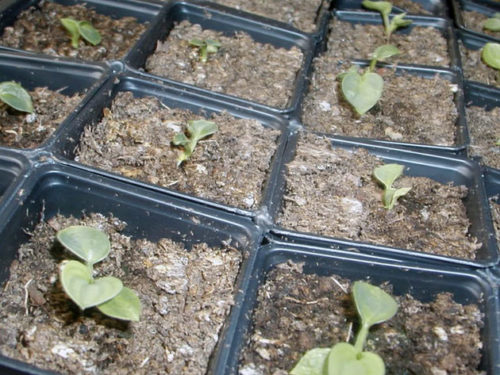

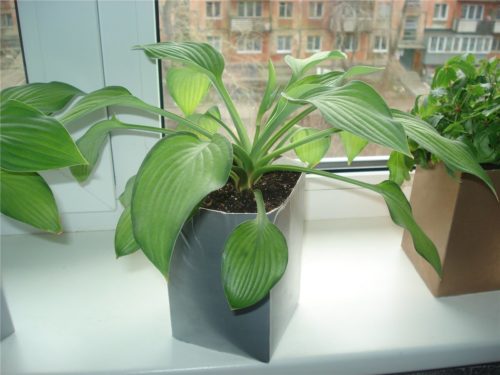
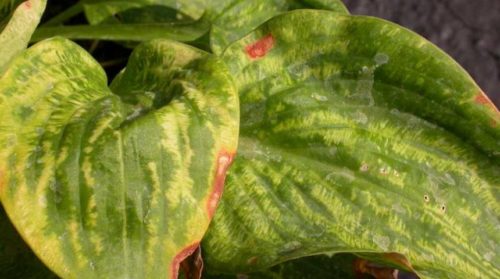












 Start a discussion ...
Start a discussion ...